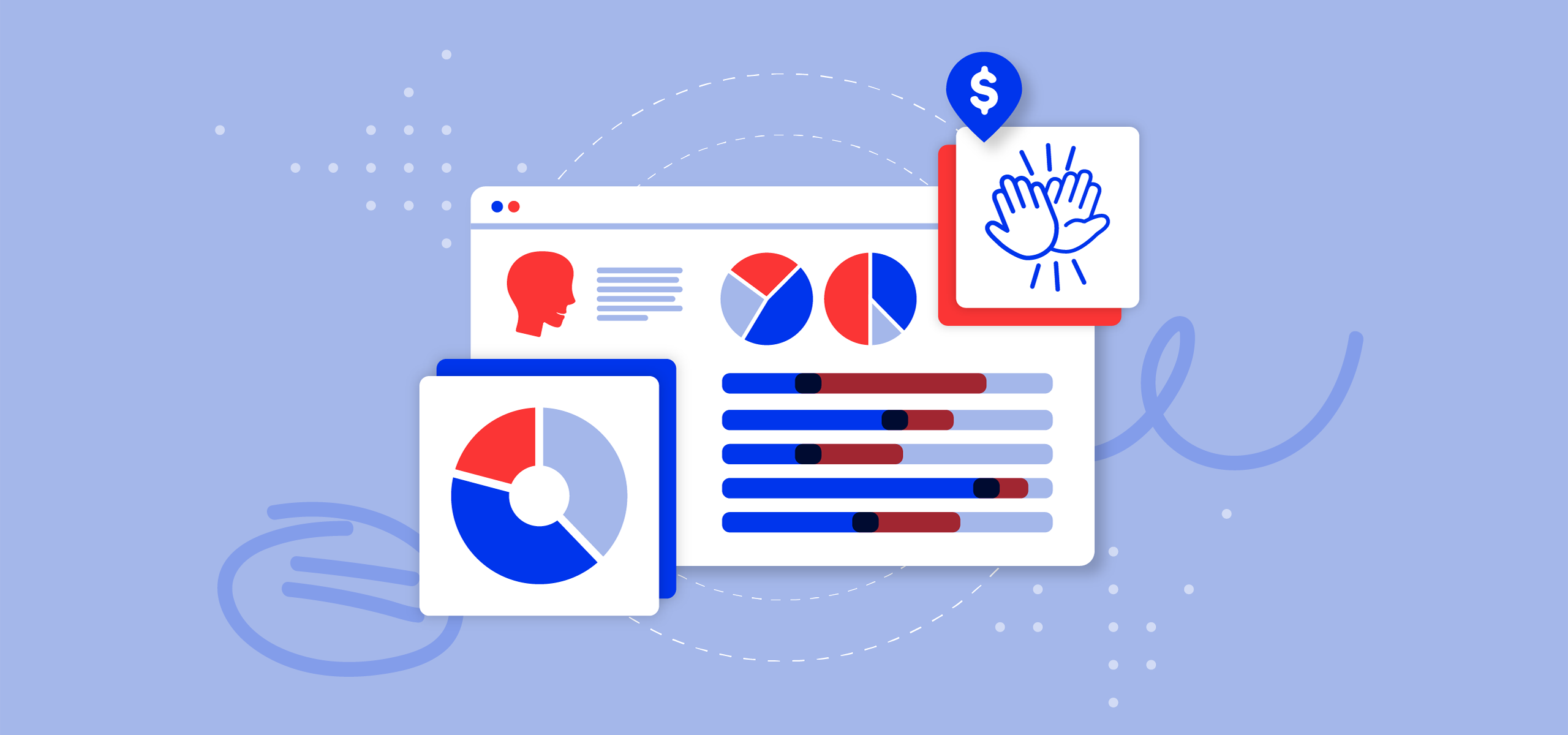As Google Ads managers, most of our energy is focused on optimising accounts, improving performance, and keeping up with the latest techniques and best practices. In most cases, we're more comfortable analysing spreadsheets and putting together pivot tables than reaching out to clients or creating monthly reports. Despite this, communicating with clients is a huge driver of value — something we should actively spend time working to improve.
Unfortunately, reporting and client management are often reduced to an afterthought, something we do in the gaps between other "more important" work. With clients almost entirely removed from our day-to-day practice, reports can be a client's only regular point of contact with their account manager. Most current reporting tools focus on creating dense, data-driven dashboards, meaning context and communication often come in second. Without guidance, reassurance, and consistent contact, clients can start to feel underwhelmed and unconsidered — not to mention less forgiving when performance takes an unexpected dip.
As account managers, it's our responsibility to frame things in a way that helps our client achieve their goals, instead of leaving them with a mountain of performance data they're unsure how to interpret. Our goal should be to provide the context that connects the dots. By considering the client, their needs, their business practices, their familiarity with Google Ads concepts, their technical proficiency, and other factors, we can start to create informative, engaging, and readable reports tailored to their specific characteristics.
While building Reports, we looked at hundreds of Google Ads reports created by all kinds of managers, as well as their thoughts and processes around monthly reporting. Whether working at large agencies with bigger clients, or as freelancers with smaller clients, the following principles consistently lead to better outcomes for managers, and should help you create reports and build processes that improve retention rates and keep clients happy.
1. Consider the client
It might seem obvious at first, but one of the issues we see most often with Google Ads reports is that they are either too complex and data-centric, or too simple and lacking the detail required to drive decisions. Solving this problem starts with considering the client. How big is their business? How familiar are they with the digital marketing funnel? Are they familiar with Google Ads concepts? Did the client start their career as a salesperson? Asking these questions and considering the client's perspective can give you the tools to put their Google Ads data in the right context.
If the client runs a large, internet-based business and understands the digital marketing funnel, your report can afford to be more detailed and use more complex metrics. If your client started their career as a salesperson, it might make sense to foreground conversions and build your messaging around lead generation. If your client runs a small brick-and-mortar store with little understanding of the digital marketing space, you should consider focusing on education, sharing important Google Ads concepts, the principles behind ad testing, branding campaigns, quality scores, landing page experience, and so on.
More often than not, it makes sense to focus on metrics that have meaning in an everyday business context. Simple metrics that relate to the core functions of the business (Spend, Conversions, Cost Per Conversion, ROAS) tend to be more engaging and easier to understand than complex metrics like Quality Score or Lost Impression Share.
Similarly, when including examples of your work, favour those that clients are likely to be familiar with. For instance, most clients will be familiar with Google SERPs, so it’s easy for them to appreciate and understand the value of new ad copy. You could also consider showing some optimisations that relate to audience targeting — audience dimensions like location, age, or device are familiar and easy to understand concepts that clients can see value in.
2. Comments and context
Context turns data into insight. Consider these two cases:
- Sharing a table containing the top performing countries in a Google Ads account.
- Sharing the same table, highlighting an unexpected top performer, including an example of a bid adjustment for that top performer, offering to create a location-specific marketing campaign, and asking the client if they would consider creating a localised product for the market.
Simply sharing a table provides the client with the data they need to generate insights, but doesn't go far enough. In comparison, highlighting a particular country, offering a case for expansion, and providing clear action steps, puts the client in a position to approve the suggestion without adding more work to their plate.
Comments play an essential role in providing the context clients need to understand account performance. There are a few important things to remember here:
- Always explain how key metrics relate to the business. For example, a reduction in Cost Per Conversion means each sale costs the business less, thus increasing their profit margin. Conversely, a decrease in Cost Per Click means cheaper traffic, so the business may be able to acquire more sales for the same budget. Where possible, aim to translate Google Ads language to simple business language so clients can understand the value you create.
- Metrics shown in isolation don’t always tell the full story. For example, a reduction in Conversions would normally be considered bad news, but if we share the context that we've been reducing spend to meet a new budget target, fewer conversions are expected and the client has less reason to worry. Use comments to frame performance fairly and ensure your client understands the context behind each of your decisions.
- Try to make a connection between positive changes to performance and your day-to-day work. For example, if Click Through Rates go up, consider sharing some of the new ads you wrote. If Conversions increase, talk to your client about any new campaigns that are doing well.
- Remember to write in a friendly and engaging way. While we're familiar with seemingly simple metrics like Cost Per Impression, or acronyms like CTR, ROAS, and CPC, your client may not be. As a general rule, steer clear of jargon and explain more complex concepts when needed.
3. Use target ranges
In the early days of a client relationship, when tackling a Google Ads account with a fresh pair of eyes, we’ll likely find lots of opportunities to make performance gains. We might be tempted to proudly report an X% decrease in CPA or a Y% increase in CTR compared to the previous period before we were hired — no mention of targets needed.
This approach can be risky, because over time, account performance tends to resemble a series of plateaus rather than consistent and predictable performance gains. Even the healthiest accounts will see diminishing returns, peaks, troughs, and flatlines in their lifetime. Judging performance on previous results alone can lead to negative outcomes and leave clients feeling underwhelmed or frustrated.
If we don’t anchor performance conversations around target ranges, we risk clients thinking something like:
We paid another management fee this month, but saw little to no improvement in our account performance. It wasn't like this before, maybe we should find another manager.
Agreeing targets with clients from day one helps reframe the role of a Google Ads professional from someone responsible for delivering performance gains every single month (an unreasonable expectation) to someone who is responsible for consistently delivering performance in line with targets (much more reasonable). Setting expectations early on makes for a much more pleasant experience for everyone. Clients don’t worry unnecessarily about natural performance fluctuations, while as managers, we don’t need to worry that we’re under-delivering for our clients.
Target ranges soften the blow of performance fluctuations even further. Instead of setting a static target that can be missed easily, consider setting up a target range with a reasonable floor and ceiling. With a leeway of a few dollars or percentage points either side, the likelihood of missing target is reduced dramatically, and your client can be more understanding of seasonal changes and other factors that can influence performance. If you're interested in reading more about target ranges, take a look at this article.
4. Share bad news
A bad report isn’t necessarily one that shares bad news with the client. As we've established, performance can fluctuate for a multitude of reasons outside our control. Instead, bad reports try to hide bad news from the client, give excuses rather than suggestions when metrics drop, and attempt to confuse clients with mountains of data.
Transparency is key to building trust. If performance takes a downturn, be open and honest. Crucially, have a plan to improve the situation. If you communicate clearly and have a plan to improve things, clients will appreciate that you’re committed to solving the problem without putting extra work (and stress) on their plate. In the most simple terms, people are more than capable of dealing with bad news, it's only when we to start to hide things that issues arise.
Rounding up
In summary, client-focused reports should aim to:
- Communicate in simple, relatable terms, using language the client is comfortable and familiar with.
- Consider the broader context of the client's business. Are they looking to build a new audience, or generate cost effective conversions? Are they looking to expand into new territories? Focused on beating a competitor? Releasing a new and improved product range?
- Help clients generate new ideas. Are ads performing unexpectedly well in Sweden? Share any interesting information with your client. They might be in a position to release a localised product, or ad campaign.
- Help clients understand the digital marketing funnel and optimise their business towards selling products/services online. Whether tracking different conversion types, or creating awareness campaigns, a well-informed client is always more receptive to new ideas.
- Be honest when sharing bad news with clients. Aim to communicate in a way that encourages honesty and openness when difficult situations arise.


